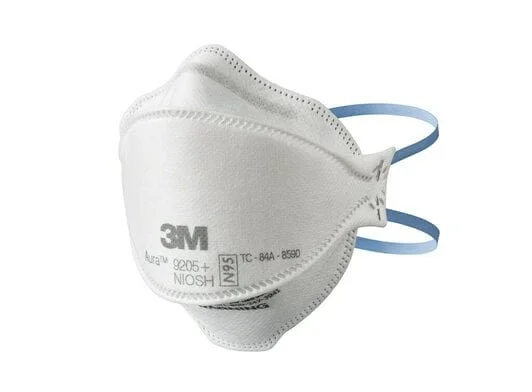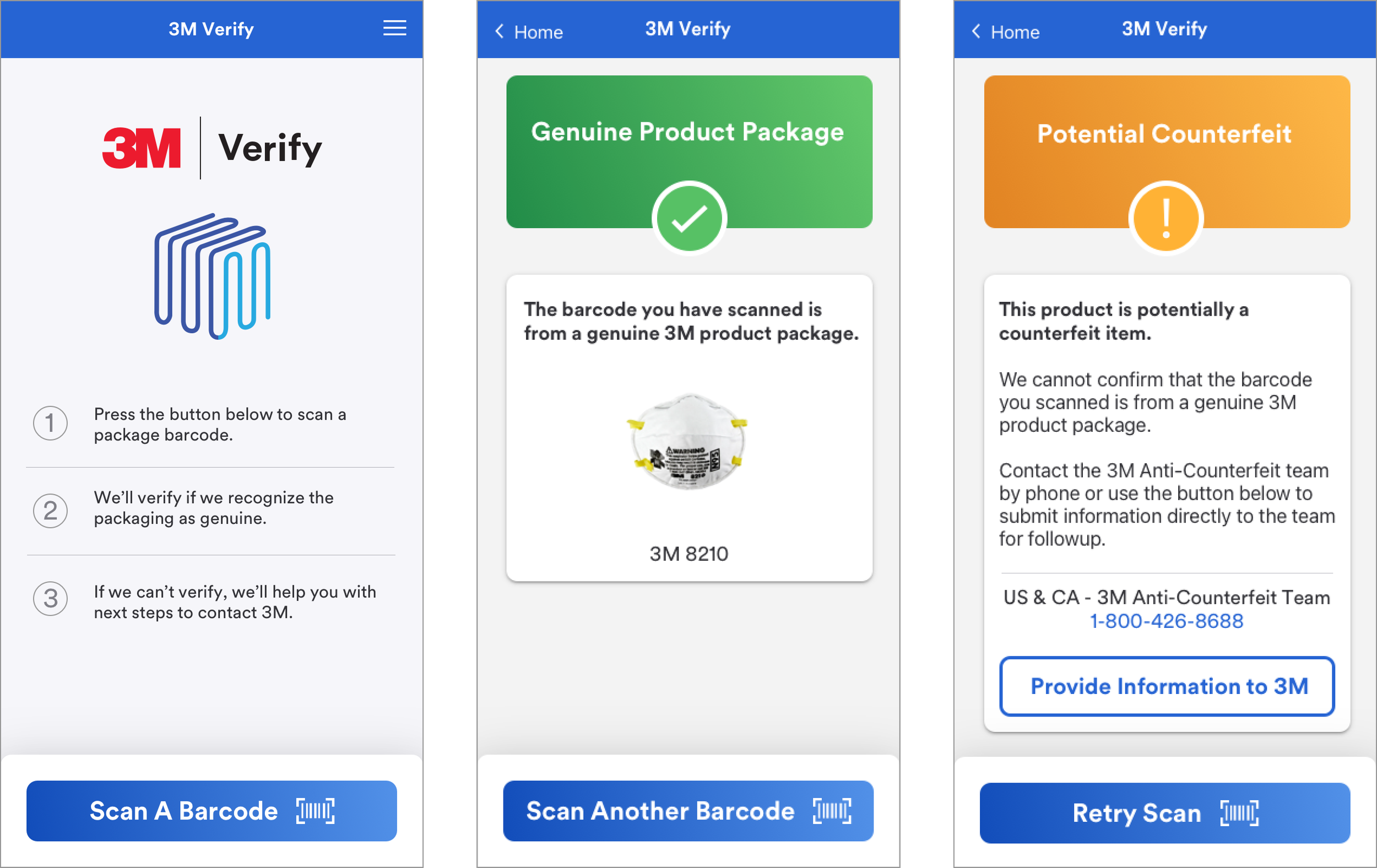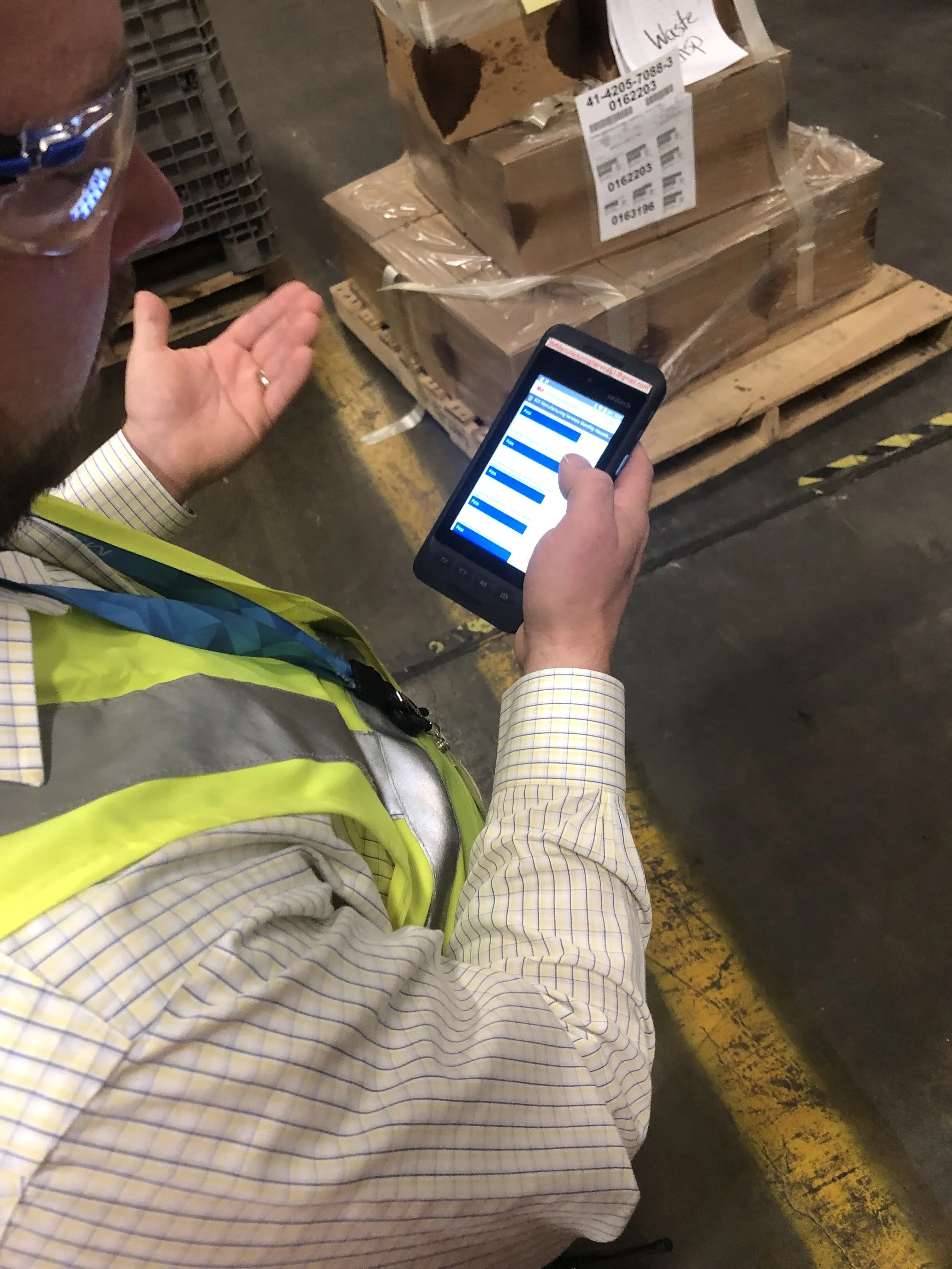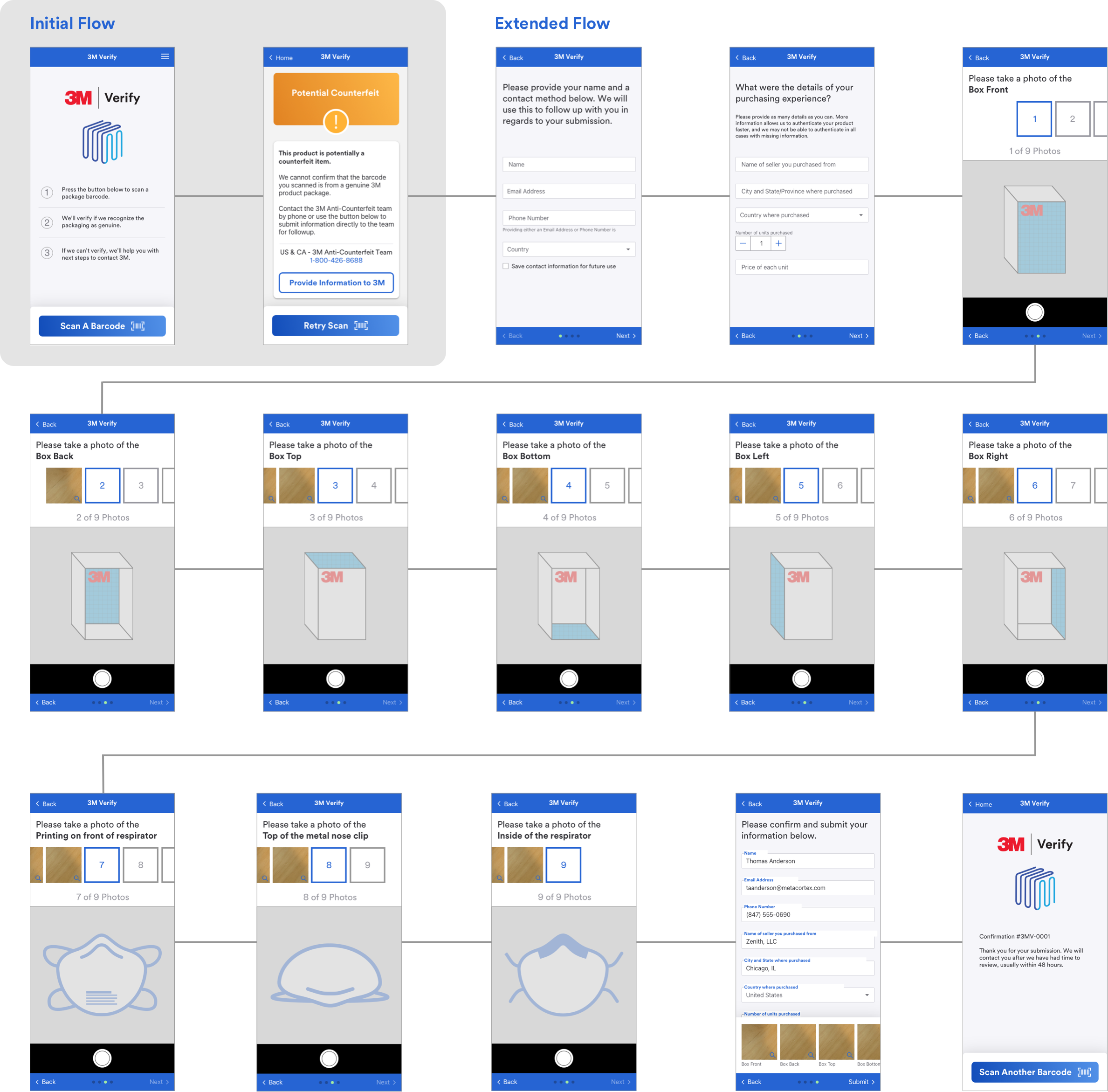Verifying Authenticity
Heuristic Review | Contextual Inquiry | User Interviews | Usability Testing
3M faced major challenges when Covid-19 drove the need for PPE and fake masks entered the market. In response, we applied new anti-counterfeiting technology to create a trust-building experience for customers.
Impact
Expanded the target user definition
At first, the product team wanted to create a counterfeit detection tool for people wearing masks. After my involvement, we targeted other critical roles along the distribution chain.
Improved efficiency for the 3M fraud team
My exploration of our internal fraud investigation process revealed inefficient manual data collection. This insight convinced the product team to add functionally that allowed users to provide information about suspicious masks.
Built customer trust
User testing taught us that our early experience produced more questions than answers for customers. We used this evidence to craft clearer language and points of reassurance.
3M Disposable Respirator, aka mask
Users
Customers
People and organizations in the disposable respirator distribution chain, including distributors, public health organizations, and end users
Responsible for keeping people safe
Managing large quantities of masks
Dealing with uncertainty
3Mers
The internal 3M Fraud Team responsible for investigating potential counterfeit products
Recently experienced fast growth
Geographically dispersed
Deal with many false alarms
The Ask
After 3M saw an increase in fake respirators, they invested in a new counterfeit prevention technology. This technology included a preexisting app that allowed users to scan a product barcode and receive a “Genuine Product” or “Potential Counterfeit” result. Stakeholders asked my team to take an existing customer-facing app and “make it look like 3M”.
Final Screens | Instructions and Authentication Results
User testing at receiving dock
Research Findings
My research process revealed that the initial ask was too limited.
3Mers: I identified another opportunity through contextual inquiry with members of the 3M Fraud Team. Their investigation process was long and disjointed. We could improve their efficiency and accuracy by adding more of their process to the customer-facing app.
Customers: The proposed app also left customers wanting more. To truly trust the results, they needed:
Clearer language
An explanation of the next steps in the investigation process
Confirmation that their case was being processed
Process
Heuristic Review | Learned the limitations and challenges of the previous 3M counterfeit prevention solution
Contextual Inquiry | Mapped the 3M internal process for investigating suspicious masks
User Interviews | Collected real user stories of dealing with counterfeit masks during the pandemic
Usability Testing | Prototyped the mobile experience and usability testing for comprehension and task completion
Delivery | Delivered complete app design, identified important metrics to track, and laid the groundwork for an expansion of the system to other 3M products
Result
Without changing timelines, my team delivered an extended user flow. Previously in the case of an investigation, the 3M Fraud Team asked customers for many pieces of information via phone and email. The extended flow now allows customers to provide this information via the app. This solution creates internal efficiencies for 3M while building trust with customers.
The success of this work led 3M to expand the solution to other products at risk of counterfeiting.
Extended App Flow



